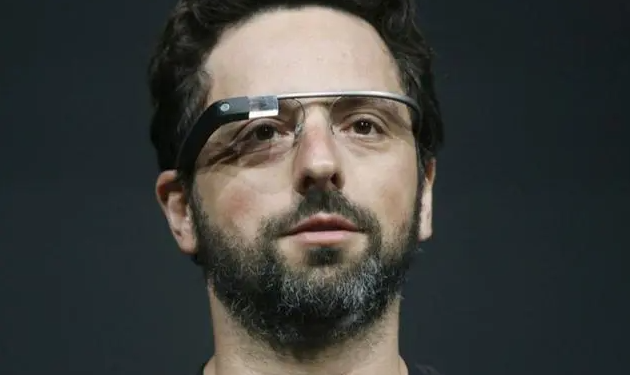Home entertainment has undergone a remarkable transformation in recent years, driven by advancements in technology and shifting consumer preferences. In this article, we’ll delve into the future of home entertainment, exploring the role of smart TVs, streaming devices, and media centers in shaping the way we consume and interact with digital media.
Introduction to Home Entertainment
Definition and Overview
Home entertainment encompasses a wide range of activities and devices aimed at providing leisure and enjoyment within the home environment. From watching movies and TV shows to playing video games and listening to music, home entertainment technologies play a central role in modern lifestyles.
Evolution of Home Entertainment Technology
Over the years, home entertainment technology has evolved significantly, from the introduction of color television and VCRs to the advent of digital streaming and smart devices. Today, consumers have access to an unprecedented array of entertainment options, all accessible from the comfort of their living rooms.
Smart TVs: The Centerpiece of Modern Living Rooms
Features and Capabilities
Smart TVs are television sets equipped with internet connectivity and integrated software platforms, allowing users to access a variety of online content and services. From streaming movies and TV shows to browsing the web and playing games, smart TVs offer a versatile and immersive entertainment experience.
Integration with Smart Home Ecosystem
Smart TVs are increasingly becoming the centerpiece of the smart home ecosystem, capable of controlling other connected devices such as lights, thermostats, and security cameras. By integrating with voice assistants and smart home hubs, smart TVs streamline home automation and enhance user convenience.
Streaming Devices: Unlocking a World of Content
Types of Streaming Devices
Streaming devices are compact multimedia devices that connect to a television or display and enable streaming of digital content from the internet. Examples include streaming sticks, set-top boxes, and gaming consoles, each offering unique features and content libraries.
Benefits of Streaming Services
Streaming services such as Netflix, Amazon Prime Video, and Disney+ have revolutionized the way we consume entertainment, offering on-demand access to a vast library of movies, TV shows, and original content. With streaming devices, users can enjoy a personalized entertainment experience tailored to their preferences and interests.
Media Centers: Creating Immersive Entertainment Experiences
Definition and Functionality
Media centers are dedicated devices or software applications designed to organize, manage, and play digital media files such as movies, music, and photos. By centralizing media content in one location, media centers simplify content access and enhance the viewing and listening experience.
DIY vs. Pre-built Media Centers
Consumers have the option to either build their own media centers using off-the-shelf hardware and software components or purchase pre-built media center solutions. DIY media centers offer flexibility and customization options, while pre-built solutions provide convenience and ease of use out of the box.
Integration and Interconnectivity
Seamless Content Sharing
One of the key advantages of modern home entertainment systems is the ability to seamlessly share content across different devices and platforms. Whether it’s streaming a movie from a smartphone to a smart TV or casting music from a tablet to a wireless speaker, interconnectivity enhances the overall entertainment experience.
Multi-device Synchronization
Another emerging trend in home entertainment is multi-device synchronization, where content can be synchronized across multiple screens and speakers for a more immersive viewing and listening experience. By leveraging wireless technologies such as Bluetooth and Wi-Fi, users can create synchronized audiovisual setups tailored to their preferences.
The Rise of 4K, 8K, and Beyond
High-Resolution Content
With the proliferation of high-resolution displays such as 4K and 8K televisions, consumers are demanding content that can fully leverage the capabilities of these advanced displays. Streaming services and content creators are increasingly offering ultra-high-definition (UHD) content, providing viewers with sharper images and more vibrant colors.
Enhanced Viewing Experience
High-resolution content not only enhances visual fidelity but also immerses viewers in more engaging and lifelike entertainment experiences. From watching blockbuster movies in 4K HDR to playing video games in stunning detail, high-resolution content elevates the home entertainment experience to new heights.
Gaming on Smart TVs and Consoles
Gaming Integration
Smart TVs and gaming consoles are blurring the lines between traditional television viewing and gaming experiences, offering a wide range of gaming options and experiences. From casual mobile games to console-quality titles, users can enjoy immersive gaming experiences directly on their smart TVs.
Cross-platform Connectivity
Furthermore, cross-platform connectivity enables seamless gaming experiences across different devices and platforms. Whether you’re playing a game on your smart TV, smartphone, or gaming console, you can pick up where you left off and continue your gaming session without interruption, thanks to cloud gaming services and cross-platform multiplayer support.
Challenges and Considerations
Bandwidth and Internet Speeds
One of the primary challenges of streaming high-quality content is the reliance on stable internet connections and sufficient bandwidth. Slow internet speeds or network congestion can lead to buffering, poor video quality, and interruptions in the streaming experience, highlighting the importance of reliable internet infrastructure.
Privacy and Data Security
As home entertainment systems become increasingly connected and interconnected, privacy and data security concerns become more prevalent. Devices such as smart TVs and streaming devices may collect user data for advertising and analytics purposes, raising questions about data privacy and consumer rights.
Future Trends and Innovations
AI Integration
Artificial intelligence (AI) integration is poised to transform the future of home entertainment, enabling personalized content recommendations, voice-controlled interfaces, and intelligent automation features. AI algorithms will analyze user preferences, viewing habits, and contextual data to deliver tailored entertainment experiences in real-time.
Virtual Reality and Augmented Reality
Virtual reality (VR) and augmented reality (AR) technologies have the potential to revolutionize home entertainment by offering immersive and interactive experiences. From virtual movie theaters to augmented reality gaming, VR and AR will open up new possibilities for experiencing digital media in the comfort of your own home.
Conclusion
In conclusion, the future of home entertainment is bright and full of exciting possibilities. Smart TVs, streaming devices, and media centers are transforming the way we consume and interact with digital media, offering unparalleled convenience, versatility, and immersive experiences. As technology continues to evolve, we can expect home entertainment systems to become even more integrated, intelligent, and personalized, enriching our lives and enhancing our leisure time.

FAQs After The Conclusion
- Are smart TVs compatible with all streaming services?
- Most smart TVs support popular streaming services such as Netflix, Amazon Prime Video, and Hulu, but compatibility may vary depending on the manufacturer and model. It’s essential to check the list of supported apps and services before purchasing a smart TV.
- Can I use streaming devices with any television?
- Yes, streaming devices are designed to work with most modern televisions equipped with HDMI ports. Whether you have a smart TV or a traditional TV, you can connect a streaming device to access a wide range of streaming content and services.
- What is the difference between a media center and a streaming device?
- A media center is a dedicated device or software application designed to organize, manage, and play digital media files stored locally or on networked storage devices. In contrast, a streaming device is a compact multimedia device that connects to a television or display and enables streaming of digital content from the internet.
- Can I play video games on a smart TV?
- Yes, many smart TVs support gaming features and can run a variety of video games, ranging from casual mobile games to console-quality titles. Additionally, gaming consoles such as PlayStation and Xbox can be connected to smart TVs for a more immersive gaming experience.
- How can I improve my home internet speed for streaming?
- To improve home internet speed for streaming, you can upgrade to a higher-speed internet plan, optimize your Wi-Fi network for better coverage and performance, or use wired connections whenever possible. Additionally, minimizing the number of connected devices and avoiding bandwidth-heavy activities during peak usage times can help improve streaming quality.
- Are there privacy settings I can adjust on smart TVs and streaming devices?
- Yes, most smart TVs and streaming devices offer privacy settings that allow users to control data collection, targeted advertising, and sharing of personal information. Users can adjust these settings to enhance privacy and security according to their preferences.
- Can I connect multiple streaming devices to the same television?
- Yes, you can connect multiple streaming devices to the same television by using available HDMI ports. This allows you to access a wider range of streaming content and services without the need for separate devices or subscriptions.
- What are some future innovations we can expect in home entertainment?
- Future innovations in home entertainment may include advancements in AI integration, virtual reality and augmented reality experiences, interactive content formats, and enhanced multi-device synchronization. These innovations will further enhance the overall entertainment experience and provide new avenues for creativity and exploration.




![Top 10 Smart Home Devices of [Current Year]: Reviews and Comparisons](https://digital-electron.com/wp-content/uploads/2024/02/image-42-350x250.png)








